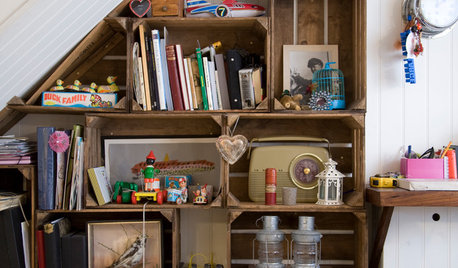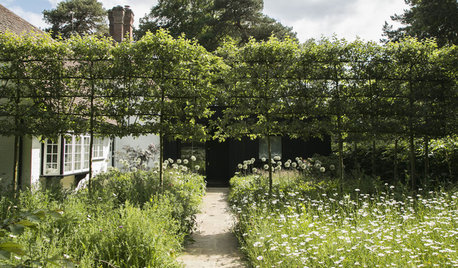How to make an interstem apple?
milehighgirl
15 years ago
Related Stories

LIVING ROOMSRoom of the Day: A Family Living Space for Weekends in the Big Apple
A Long Island couple create a family-friendly and stylish New York City retreat where they can unwind and entertain
Full Story
EDIBLE GARDENSHow to Add an Apple Tree to Your Edible Garden
Readily available, beautiful and fragrant, apple trees offer four-season interest along with crisp, juicy fruit
Full Story
VINTAGE STYLEFlea Market Find: Apple Crates
If life gives you apples, reuse the vintage crates they came in to decorate your home
Full Story
DECORATING GUIDESCrisp, Fresh: Go for Green Apples
On the Walls or Au Natural, Green Apples Pack a Decorative Bite
Full Story
GARDENING AND LANDSCAPINGCrab Apple Trees Set Off a Stylish English Courtyard
A structure of pleached crab apple trees, bordered by a wildflower meadow, links a minimalist addition to an old house in Buckinghamshire
Full Story
PRODUCT PICKSGuest Picks: An Apple a Day
20 products to help your iPad, iPhone and other Apple gadgets feel right at home
Full Story
COLORApple Accents: Color from the Orchard Comes Home
Cheerful reds and crisp greens inspire everything from centerpieces to bedscapes
Full Story
HOME TECHThanks, Steve: Apple-Inspired Design at Home
See how the Mac and iPod aesthetic synchs up with today's house
Full Story
HOME TECHWhy Google Just Paid $3.2 Billion for a Company That Makes Thermostats
Smart home technology just got a new champion — and everyone is speculating about the reasons
Full Story




theaceofspades
myk1
Related Discussions
Apples - DIY Interstem and Stool Bed
Q
15" Dwarf Apple interstem
Q
Spacing for apple trees on interstem rootstocks.
Q
How do I make apple juice at home ?
Q
theaceofspades
milehighgirlOriginal Author
jellyman
fruitnut Z7 4500ft SW TX
myk1
myk1
milehighgirlOriginal Author
jellyman
milehighgirlOriginal Author
myk1
gonebananas_gw
olpea
murkwell
Beeone
jellyman
theaceofspades
wildlifeman
myk1
wildlifeman
milehighgirlOriginal Author
myk1
theaceofspades
myk1
milehighgirlOriginal Author
theaceofspades
myk1
olpea
Axel
kansasfruiter
milehighgirlOriginal Author
myk1
jellyman
Suzi AKA DesertDance So CA Zone 9b
milehighgirlOriginal Author
alan haigh
milehighgirlOriginal Author
jellyman
alan haigh
myk1
Suzi AKA DesertDance So CA Zone 9b